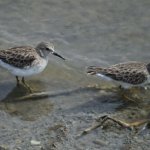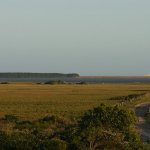By: Marcela Castellino, Flyways Conservation Specialist and Marina Castellino, Education and Youth Engagement Specialist
On November 29th, the WHSRN site Laguna Mar Chiquita (Córdoba, Argentina) hosted international visitors from a sister saline lake. A delegation of 17 people celebrated with residents and local institutions two major events: (1) the recent declaration, on June 30, 2022, of the Ansenuza National Park and Reserve, which protects almost the entire WHSRN site; and (2) the 30th anniversary of signing the Tripartite Sister Agreement between Mono Lake (California, USA), the Great Salt Lake (Utah, USA) and Laguna Mar Chiquita (Córdoba, ARG).
The joint work agenda included a series of face-to-face events, organized by the WHSRN Executive Office together with Fundación Líderes de Ansenuza (Ansenuza Leaders Foundation), and supported by other organizations and local partners, including Aves Argentinas and Natura Argentina.
The first event was the International Forum of Environmental Leaders, the final activity for the Environmental Experience program, led by Fundación Líderes de Ansenuza. For three days, 30 outstanding high school students, five faculty and five university students shared with the international delegation about conservation challenges, developed interventions to connect the sites together, and enjoyed presentations of more than 20 speakers that included scientists, businessmen and entrepreneurs, various conservation actors, among others. One of the featured speakers was Rob Clay, director of WHSRN Executive Office and Vice President of Manomet’s Flyways Program, who noted that “migratory birds do not understand borders and invite us to work from cooperation and connectivity.” The event closed with the unveiling of a mural that honors the sisterhood and the interconnection of the sites, highlighting the Wilson´s Phalarope (Phalaropus tricolor) as the linking species. The visitors and locals involved in the agreement had the opportunity to autograph the mural as a sample of the spirit of collaboration and the commitment to maintain collaboration over time.
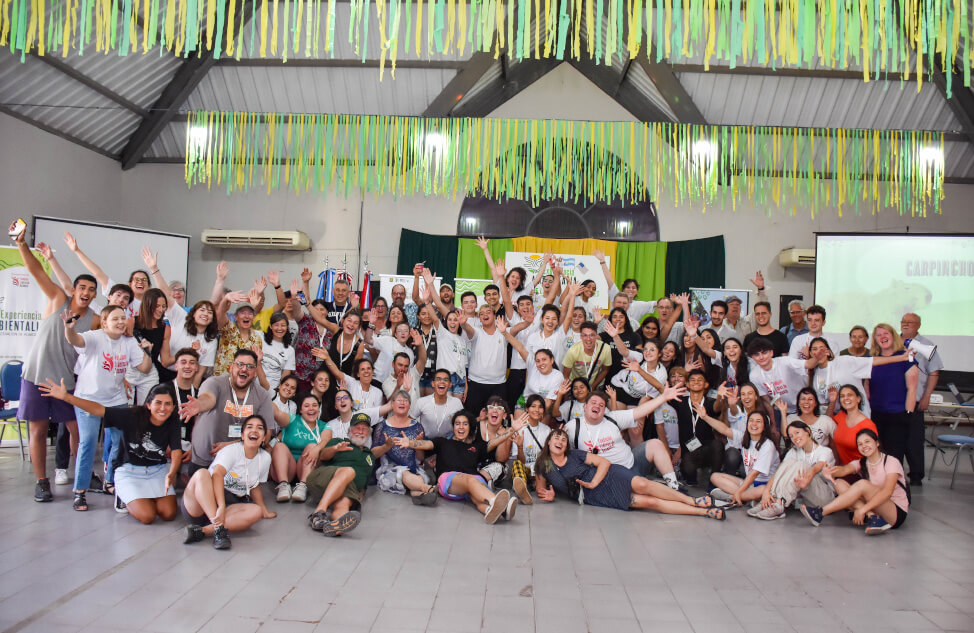
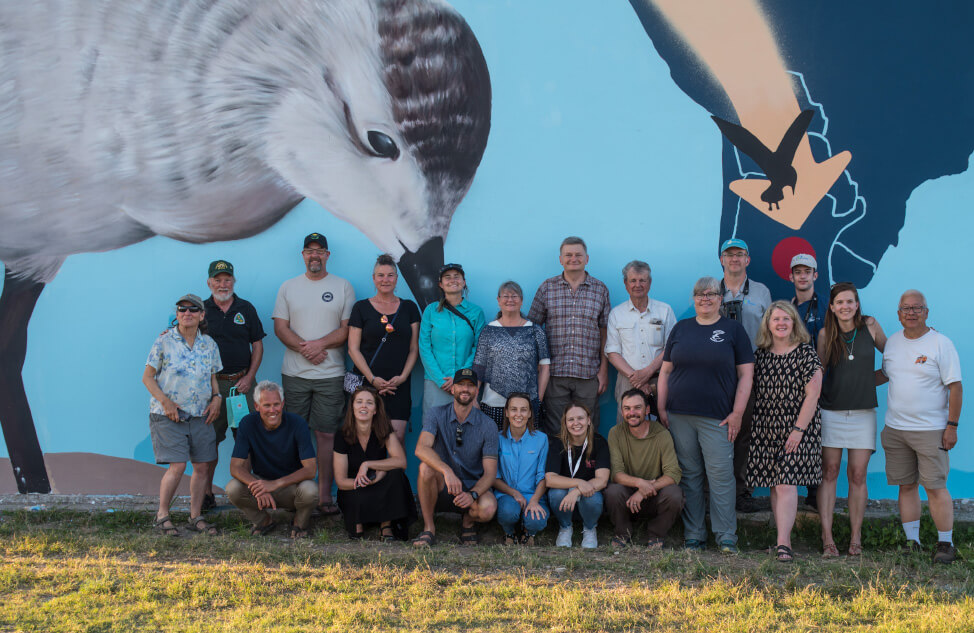
Left: Participants of the second edition of the Environmental Leaders Forum. Photo: Fundación Líderes de Ansenuza. Right: International delegation and local organizers in front of the mural celebrating the sisterhood between the three salt lakes, located in the town of Miramar de Ansenuza. Photo: Fundación Líderes de Ansenuza.
A second event was held on Saturday, December 3rd, where the international delegation shared experiences and engaged in technical discussions with relevant local and regional stakeholders. During the opening ceremony, Rob Clay; Greg Butcher of U.S. Forest Service International Programs (USFS IP); Adrián Walker, Mayor of Miramar de Ansenuza; and Federico Granato, President of the National Parks Administration of Argentina, shared their reflections on the importance of the site, its protection, the new challenges in relation to the management of the new protected area on the site, and the importance of the relationship with the sister lakes. Representatives of national and international organizations then had the opportunity to answer questions to local and regional media during a press conference. The day continued with various discussions in which authorities from the Ansenuza National Park, the Ministry of Environment of Córdoba, California State Parks and the California State Parks Rangers Association, and Oikonos Ecosystem Knowledge shared conservation and management challenges, experiences, and learnings from each of the sites perspective, and the signifiant opportunities for collaboration that exist between these two sister lakes. The day ended with an agreement on potential future actions in the areas of governance and management of the site, conservation and research, community involvement and education, and economic development.
The finishing touch of this event was the signing of two scrolls, in English and Spanish, ratifying the sisterhood between the salt lakes stakeholders. In addition, as a symbolic, artistic, and educational resource, two metal Phalaropes – one and a half meters high – were placed at the entrance of the town of Miramar de Ansenuza, host of the celebrations.
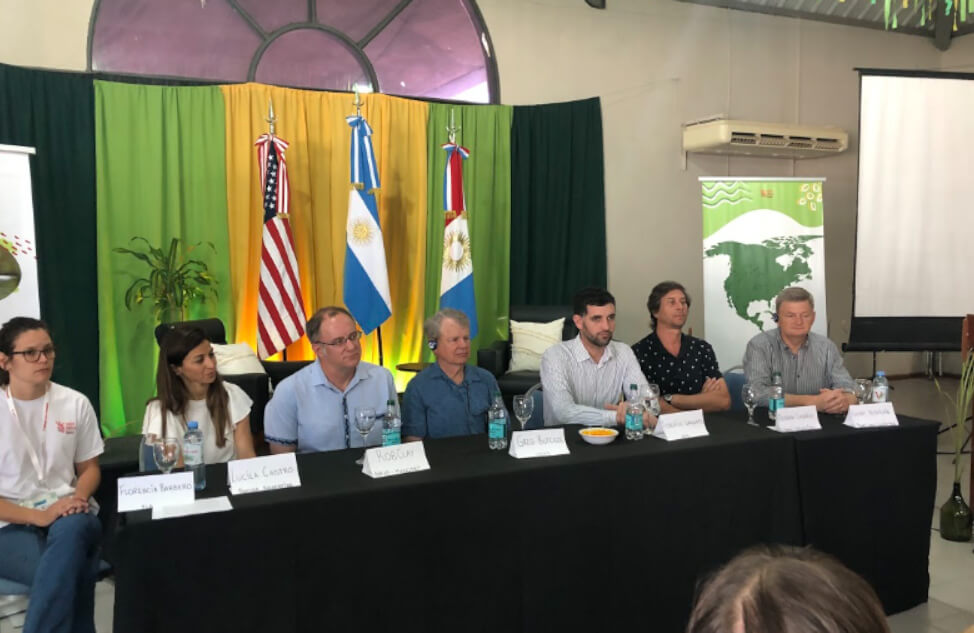
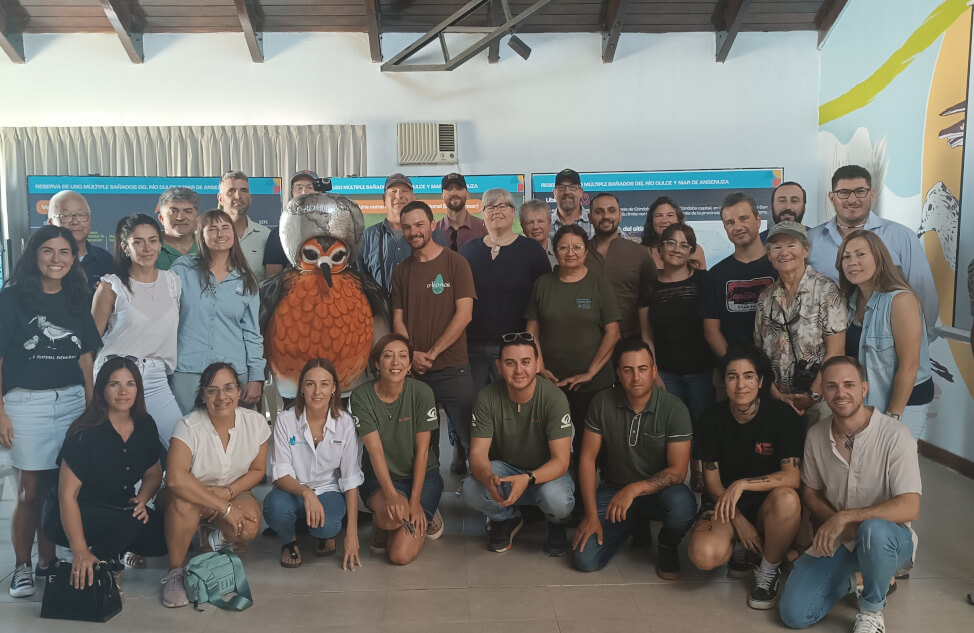
Left: Participants of the press conference held after the ceremony celebrating the 30th anniversary of the sisterhood between the three salt lakes. Photo: Fundación Líderes de Ansenuza. Right: Closing of the conference on regional development, ecotourism and bird festivals held in the town of Miramar de Ansenuza. Photo: Fundación Líderes de Ansenuza.
Another full day of activities took place on Monday, December 5th, with tourism providers from the region, municipal authorities, naturalists, members of bird watching clubs, and chambers of commerce, among others. The objective of the day was to explore the opportunities offered by the new National Park, as an engine of regional development that accompanies the conservation of the site. During the day, lessons learned and experiences in the organization of community bird festivals were shared, and successful examples such as the Shorebird Festival of Río Gallegos, Argentina (organized by the Asociación Ambiente Sur), the Mono Basin Bird Chautauqua Festival (organized by the Mono Lake Committee, California) and the Cooper River Delta Shorebird Festival in Alaska (by the U.S. Forest Service). In addition, local actors shared their experiences and desires, ending the day with a complete overview of what is needed to generate more community involvement in Ansenuza National Park and with new connections between people from all these sites.
Finally, the activities related to the continued on Tuesday, December 6th, when a portion of the international delegation traveled to the city of Córdoba to meet the Legislature of the Province with Nadia Fernández, Provisional President of the Legislature of Córdoba. This meeting ratified the will of the government of the province of Córdoba to advance in a sisterhood with the state of California to support linking actions between the sites and their communities.
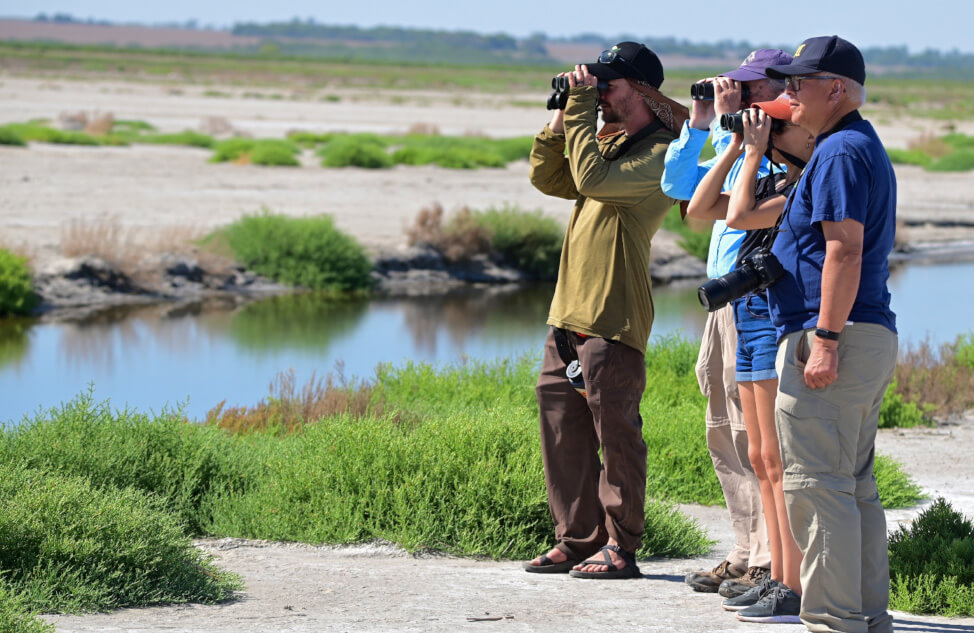
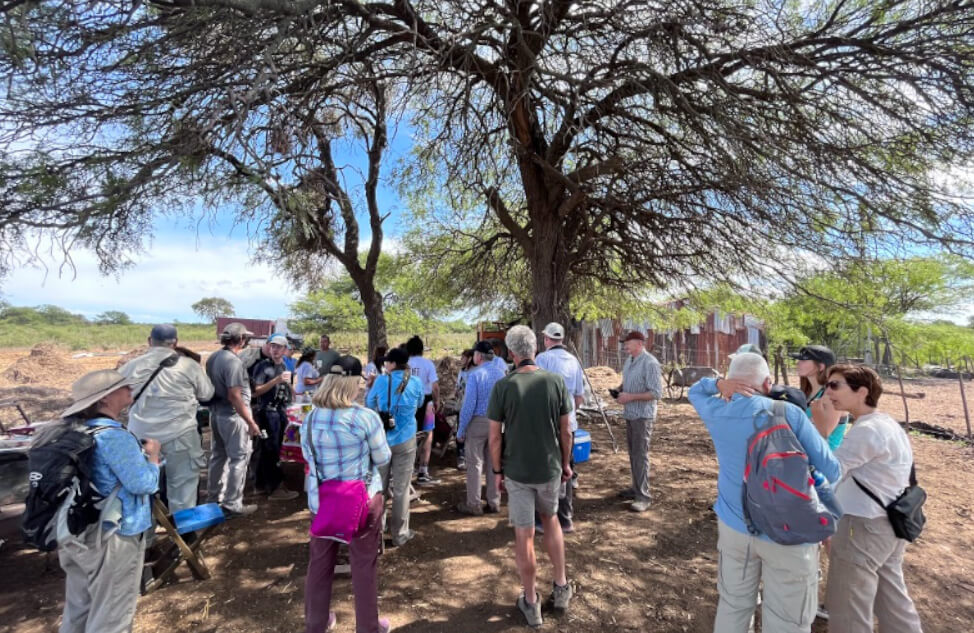
During the formal and official events, the delegation of visitors together with the organizers had an agenda full of visits to regional enterprises that seek to highlight the natural and cultural value of Ansenuza. The agenda also included historical walks, tours of natural sites and activities such as kayaking and overflights over Laguna Mar Chiquita to observe the large flocks of Phalaropes present. Left: Visit to the rural tourism venture Rancho Viejo. Photo: David Mori. Right: Visit to the Sanavirona Kasic Sacat community, northwest of Laguna Mar Chiquita. Photo: Fundación Líderes de Ansenuza.
This visit and the celebratory activities reminded us that a sisterhood is not just an abstract commitment that partners make, but it is an opportunity to frame common objectives and concrete actions to protect migratory species and the habitats on which they depend. The future of inland saline lakes is uncertain, but one thing is certain: international cooperation in conservation action is an effective tool that gives Mono Lake, Great Salt Lake and Laguna Mar Chiquita hope of overcoming threats and thriving, both for their shorebirds and their communities.
Cover Photo: Visit to the rural tourism venture Rancho Viejo. Photo: David Mori.





